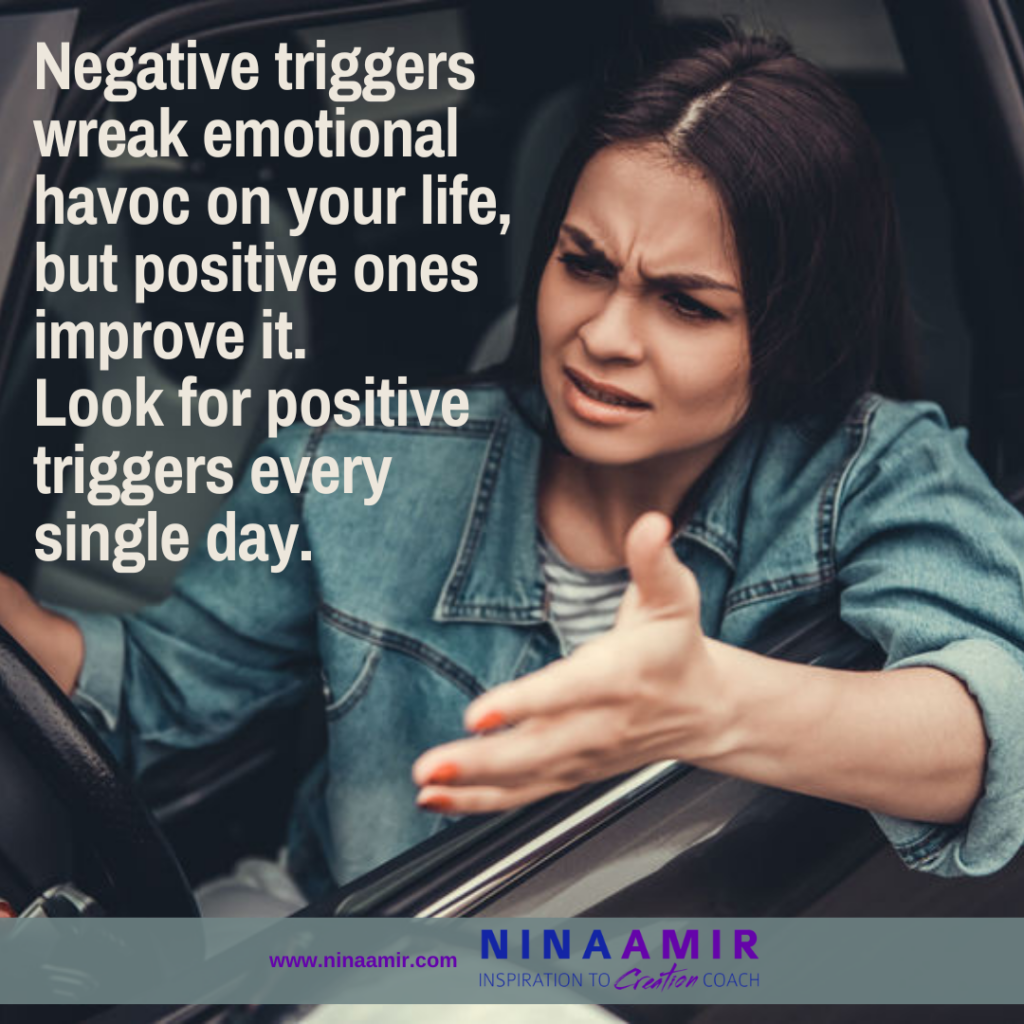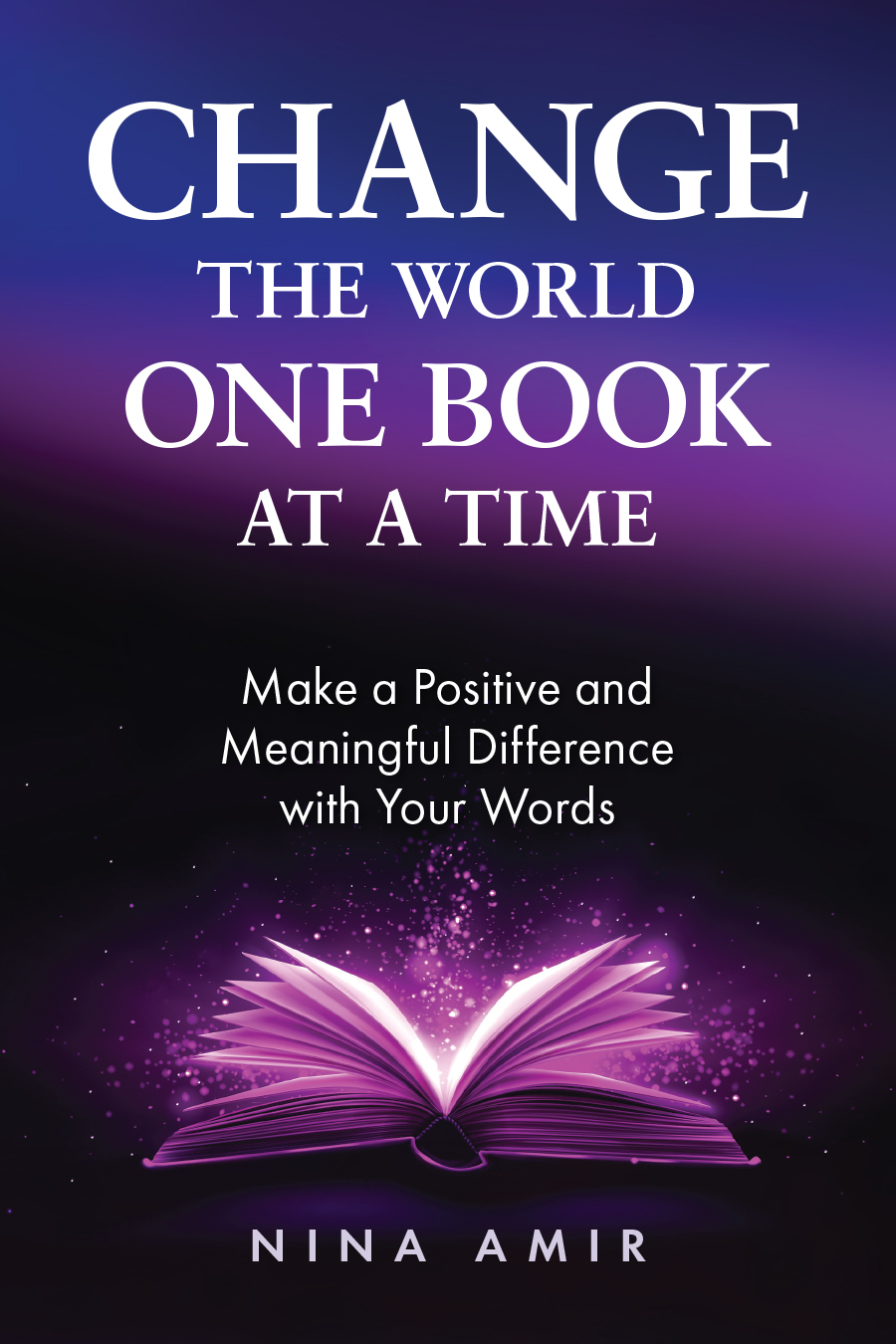Do you get “triggered”? In psychology and personal growth, a trigger is a stimulus—like a person, place, experience, or situation—that elicits an adverse reaction. However, you also experience triggers that cause a positive reaction. And while negative triggers can wreak emotional havoc on your life, positive ones can improve it considerably.
It’s common to hear someone say, “I got triggered,” or “That person, thing, or situation is a trigger for me.” Most people have at least a few triggers that bring up negative emotions or send them into a downward spiral of negative thinking and feeling.
I bet you can think of people who cause an adverse reaction within you. For example, a chance encounter with your neighbor may bring out your competitive nature, so you try to one-up her. Or you get unreasonably angry and start yelling profanities when someone cuts you off in traffic. Maybe holidays with your family always cause you to feel criticized and, therefore, unloved.
It’s essential to unpack why you get triggered. Then, you can reduce how often you get into a negative reactive mode.
Become Conscious of Positive Triggers
However, I want to suggest that you pay more attention to the people, places, situations, and things that elicit positive or pleasant reactions rather than negative ones. Become conscious of positive triggers in your life.
For instance, who or what triggers:
- Joy
- Laughter
- Love
- Compassion
- Peace
- Safety
- Abundance
These are the triggers to focus on and even seek out. Instead of avoiding negative triggers, concentrate on putting yourself in proximity to the things that positively trigger you.
After all, you want to feel those emotions, right? You want more joy, love, compassion, peace, excitement, and passion.
For example, dogs trigger happiness within me. I love dogs. For 15 years, I didn’t have a pet, so I would stop and spend a few moments with just about every dog I encountered while walking (or anywhere else). Doing so always put a smile on my face and made me feel happy. Now I have a puppy, and when I feel sad, I pet and play with her to trigger happiness.
Three Steps to Improving Your Life with Positive Triggers
Once you are conscious of what is positively triggering for you, you can take steps to increase how often you encounter those triggers. You probably realize that you may want to avoid negative triggers and seek positive ones instead to improve your life experience.
1. List your positive triggers.
To increase your experience of positive triggers, first, list the things you react to in positive or desirable ways. These can be as simple as your dog jumping on the bed at night and curling up against your back. I always feel comforted, safe, and loved when my dog does that.
My positive triggers also include my husband touching my shoulder, walking in nature, seeing blooming flowers in my garden courtyard, watching hummingbirds, talking to friends, and eating ice cream.
If you feel challenged by this first step, consider what makes you laugh or feel happy, loved, grateful, or excited. You might also wonder what makes you feel inspired, motivated, or passionate? For instance, I’m passionate about spirituality, metaphysics, and esoteric topics. I feel inspired and motivated when I can talk to someone about these topics. Plus, it sparks my passion.
2. Acknowledge when you get positively triggered.
Once you have this list of positive triggers, get a journal to record the times you get positively triggered. By acknowledging these experiences, you increase your consciousness of these triggers. Before you know it, you’ll also experience more positive stimuli.
The reason is simple: your brain is wired for confirmation bias or to process information by looking for or interpreting information consistent with your beliefs. So, if you believe you have positive triggers, your brain will seek them out.
For instance, when you decide to buy a blue Prius, you see the make and model everywhere. When you look for your positive triggers, you will see them everywhere, too.
And you will train your brain to look for them. As a result, you will begin to feel more joy, appreciation, gratitude, compassion, love, and peace.
3. Increase the duration of your positive triggers.
It’s also essential to increase the duration of your positive triggers. This happens naturally with negative triggers.
For example, when you become infuriated after someone cuts you off in traffic, you get stuck in a negative spiral of emotions and thoughts. Initially, you might exclaim, “That asshole! Why did they do that? They’re a jerk! Learn to drive!” But the anger doesn’t dissipate immediately.
Instead, you feel negative emotions and think all sorts of negative thoughts for a few minutes or longer. Thirty minutes later, you might even decide to criticize the person riding in the car with you or share the frustration you felt that morning when your computer froze, and you lost a portion of your work. In fact, a few hours could pass, and you still feel angry and frustrated—triggered.
When it comes to positive triggers, you also want to extend the time you feel that emotion. So, if you see a rainbow that makes you happy, consider how to prolong that feeling. Perhaps you could take a picture of the rainbow and share it on social media to tell others how beautiful it was and how good it made you feel. Or you could print the photo and hang it in your office so you can feel the same emotions when you look at it.
Ultimately, you want to feel those emotions and get in the energy of the positive trigger as often as possible—even perpetually. Imagine how your life would change if you did that…
How to Move Past a Negative Trigger
Sometimes it can feel difficult to move past the emotions and energy of a negative trigger once it occurs. And suppose you are in the habit of allowing yourself to be negatively triggered often. In that case, you might feel like it’s impossible to do so.
Here’s a trick. When you become aware that you have been negatively triggered, shift your focus to a positive trigger. Allow something like petting your pup or picking a rose in your garden to activate within you positive emotions. Then focus on them intentionally. You’ll find the negative emotions dissipating and the positive ones replacing them.
When you decide to focus on positive triggers, you’ll notice that you are negatively triggered less often. And your life will improve. You will have more “good” days, weeks, months, and years filled with happiness, gratitude, love, peace, excitement, passion, and inspiration.
What you focus on expands. Focus on positive triggers; you’ll see and experience more of them. So, intend to be positively triggered every single day.
Can you identify positive triggers in your life? Tell me in a comment below. And please share this post with a friend or on social media.
And if you feel stuck reacting to negative triggers, let’s chat. Get on my calendar here. Or join the Inspired Creator Community for group personal and spiritual growth coaching every month. It’s in this community that real transformation happens…and you learn to live a life that feeds your soul.
 It’s time to transform, is it not? Join the Inspired Creator Community. As a member, you will discover how to change from the inside out. Finally, be the person who does the things that allow you to create what you desire. Gain access to intuitive transformational coaching, world-class Certified High Performance Coaching, and strategies for living a life that feeds your soul. As you will discover, you are a powerful creator. It’s time to create what you want. Join now!
It’s time to transform, is it not? Join the Inspired Creator Community. As a member, you will discover how to change from the inside out. Finally, be the person who does the things that allow you to create what you desire. Gain access to intuitive transformational coaching, world-class Certified High Performance Coaching, and strategies for living a life that feeds your soul. As you will discover, you are a powerful creator. It’s time to create what you want. Join now!Photo courtesy of Zelma Brezinska .



